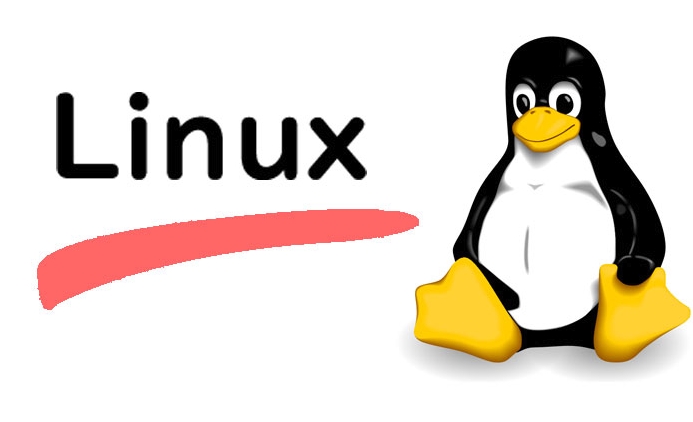Install Git: Install Git on the server through the package manager and verify the version; 2. Create a dedicated Git user: Use adduser to create a git user and optionally restrict its shell access; 3. Configure developer SSH access: Set the .ssh directory and authorized_keys file for git users, and add the developer's public key; 4. Create a bare repository: Initialize the bare repository on the server and set correct ownership; 5. Client cloning and push: Developer cloning the repository through SSH, submit changes and successfully push code to complete the construction of a private Git server.

Setting up a Git server on a Linux machine is a straightforward process that gives you full control over your repositories. While services like GitHub or GitLab are popular, a self-hosted Git server is ideal for private teams, internal projects, or learning purposes. Here's how to set it up using SSH and Git, the simplest and most common method.

1. Install Git on the Server
First, ensure Git is installed on your Linux machine.
On Debian/Ubuntu:

sudo apt update sudo apt install git
On CentOS/RHEL/Rocky Linux:
sudo yum install git # Or on newer versions: sudo dnf install git
Verify the installation:

git --version
2. Create a Dedicated Git User
It's best practice to create a dedicated user for Git to isolate access and improve security.
sudo adduser git
Set a password (or disable shell login later for enhanced security).
You can optionally disable shell access by setting the git user's login shell to git-shell :
sudo usermod -s /usr/bin/git-shell git
This restricts the git user to only Git-related operations over SSH.
3. Set Up SSH Access for Developers
Developers will push and pull code using SSH keys. You need to set up authorized keys for each user.
As the git user, create the .ssh directory:
sudo su - git mkdir .ssh && chmod 700 .ssh touch .ssh/authorized_keys && chmod 600 .ssh/authorized_keys
Now, collect each developer's public SSH key (usually id_rsa.pub or id_ed25519.pub ) and append them to authorized_keys .
Example:
echo "ssh-rsa AAAAB3NzaC1yc2E... user@machine" >> ~/.ssh/authorized_keys
Each key should be on a single line.
? Tip: You can automate this with scripts or tools like
ssh-copy-id(used from the client side).
4. Create a Bare Repository
A Git server uses bare repositories — repositories without a working directory.
Create one in /home/git (or any preferred location):
cd /home/git git init --bare myproject.git
You can name it anything, but .git extension is conventional.
Set proper ownership:
sudo chown -R git:git myproject.git
5. Clone and Use the Repository from Client
On a developer's machine, clone the repo:
git clone git@your-server-ip:/home/git/myproject.git
Replace your-server-ip with the actual server IP or domain.
Make a change and push:
cd myproject echo "Hello" > README.md git add . git commit -m "Initial commit" git push origin master
That's it — your Git server is working.
Optional: Improve Security and Usability
Use SSH key authentication only : Disable password login for SSH in
/etc/ssh/sshd_config:PasswordAuthentication no
Then restart SSH:
sudo systemctl restart sshdOrganize repositories : Place all repos in
/home/git/repositories/for consistency.Back up regularly : Since it's self-hosted, ensure you have backups of
/home/git.Use Git hooks : Automate tasks (eg, deploy on push) using hooks in the
hooks/directory of the bare repo.- GitLab Self-Managed : Full-featured, open-source platform.
- Gitea or Gitiles : Lightweight, easy to set up.
- cgit or GitWeb : Simple web interfaces for read-only access.
Alternatives to Consider
For more features (like web UI, user management, access control), consider:
But for a minimum, secure, and fast setup, plain Git over SSH is hard to beat.
Setting up a basic Git server doesn't require complex tools. With just SSH and Git installed, you can have a private, functional server up in minutes. It's not flashy, but it's reliable and gives you full control.
The above is the detailed content of Setting up a Git Server on a Linux Machine. For more information, please follow other related articles on the PHP Chinese website!

Hot AI Tools

Undress AI Tool
Undress images for free

Undresser.AI Undress
AI-powered app for creating realistic nude photos

AI Clothes Remover
Online AI tool for removing clothes from photos.

Clothoff.io
AI clothes remover

Video Face Swap
Swap faces in any video effortlessly with our completely free AI face swap tool!

Hot Article

Hot Tools

Notepad++7.3.1
Easy-to-use and free code editor

SublimeText3 Chinese version
Chinese version, very easy to use

Zend Studio 13.0.1
Powerful PHP integrated development environment

Dreamweaver CS6
Visual web development tools

SublimeText3 Mac version
God-level code editing software (SublimeText3)
 How to adjust mysql into Chinese interface? Easy to set the Chinese language environment of mysql
Jun 04, 2025 pm 06:36 PM
How to adjust mysql into Chinese interface? Easy to set the Chinese language environment of mysql
Jun 04, 2025 pm 06:36 PM
To tune MySQL into a Chinese interface, it can be implemented through MySQLWorkbench or command line tools. 1) In MySQLWorkbench, open "Preferences", select the "Appearance" tab, and then select "Chinese(Simplified)" in the "Language" drop-down menu, and restart. 2) When using command line tools, set the operating system locale variables, such as using "exportLANG=zh_CN.UTF-8" on Linux or macOS, and then run the mysql client.
 How does resource usage (CPU, memory) differ between Linux and Windows?
Jun 05, 2025 am 12:13 AM
How does resource usage (CPU, memory) differ between Linux and Windows?
Jun 05, 2025 am 12:13 AM
Linux and Windows have their own advantages and disadvantages in CPU and memory usage: 1) Linux uses time slice-based scheduling algorithms to ensure fairness and efficiency; Windows uses priority scheduling, which may cause low-priority processes to wait. 2) Linux manages memory through paging and switching mechanisms to reduce fragmentation; Windows tends to pre-allocate and dynamic adjustment, and efficiency may fluctuate.
 How does the cost of ownership differ between Linux and Windows?
Jun 09, 2025 am 12:17 AM
How does the cost of ownership differ between Linux and Windows?
Jun 09, 2025 am 12:17 AM
Linux's cost of ownership is usually lower than Windows. 1) Linux does not require license fees, saving a lot of costs, while Windows requires purchasing a license. 2) Linux has low hardware requirements and can extend the service life of the device. 3) The Linux community provides free support to reduce maintenance costs. 4) Linux is highly secure and reduces productivity losses. 5) The Linux learning curve is steep, but Windows is easier to use. The choice should be based on specific needs and budget.
 How does the performance of I/O operations differ between Linux and Windows?
Jun 07, 2025 am 12:06 AM
How does the performance of I/O operations differ between Linux and Windows?
Jun 07, 2025 am 12:06 AM
LinuxoftenoutperformsWindowsinI/Operformanceduetoitscustomizablekernelandfilesystems,whileWindowsoffersmoreuniformperformanceacrosshardware.1)LinuxexcelswithcustomizableI/OschedulerslikeCFQandDeadline,enhancingperformanceinhigh-throughputapplications
 How to install Linux alongside Windows (dual boot)?
Jun 18, 2025 am 12:19 AM
How to install Linux alongside Windows (dual boot)?
Jun 18, 2025 am 12:19 AM
The key to installing dual systems in Linux and Windows is partitioning and boot settings. 1. Preparation includes backing up data and compressing existing partitions to make space; 2. Use Ventoy or Rufus to make Linux boot USB disk, recommend Ubuntu; 3. Select "Coexist with other systems" or manually partition during installation (/at least 20GB, /home remaining space, swap optional); 4. Check the installation of third-party drivers to avoid hardware problems; 5. If you do not enter the Grub boot menu after installation, you can use boot-repair to repair the boot or adjust the BIOS startup sequence. As long as the steps are clear and the operation is done properly, the whole process is not complicated.
 How to enable the EPEL (Extra Packages for Enterprise Linux) repository?
Jun 17, 2025 am 09:15 AM
How to enable the EPEL (Extra Packages for Enterprise Linux) repository?
Jun 17, 2025 am 09:15 AM
The key to enabling EPEL repository is to select the correct installation method according to the system version. First, confirm the system type and version, and use the command cat/etc/os-release to obtain information; second, enable EPEL through dnfinstallepel-release on CentOS/RockyLinux, and the 8 and 9 version commands are the same; third, you need to manually download the corresponding version of the .repo file and install it on RHEL; fourth, you can re-import the GPG key when encountering problems. Note that the old version may not be supported, and you can also consider enabling epel-next to obtain the test package. After completing the above steps, use dnfrepolist to verify that the EPEL repository is successfully added.
 How does Linux perform compared to Windows for web server workloads?
Jun 08, 2025 am 12:18 AM
How does Linux perform compared to Windows for web server workloads?
Jun 08, 2025 am 12:18 AM
Linux usually performs better in web server performance, mainly due to its advantages in kernel optimization, resource management and open source ecosystem. 1) After years of optimization of the Linux kernel, mechanisms such as epoll and kqueue make it more efficient in handling high concurrent requests. 2) Linux provides fine-grained resource management tools such as cgroups. 3) The open source community continuously optimizes Linux performance, and many high-performance web servers such as Nginx are developed on Linux. By contrast, Windows performs well when handling ASP.NET applications and provides better development tools and commercial support.
 How to choose a Linux distro for a beginner?
Jun 19, 2025 am 12:09 AM
How to choose a Linux distro for a beginner?
Jun 19, 2025 am 12:09 AM
Newbie users should first clarify their usage requirements when choosing a Linux distribution. 1. Choose Ubuntu or LinuxMint for daily use; programming and development are suitable for Manjaro or Fedora; use Lubuntu and other lightweight systems for old devices; recommend CentOSStream or Debian to learn the underlying principles. 2. Stability is preferred for UbuntuLTS or Debian; you can choose Arch or Manjaro to pursue new features. 3. In terms of community support, Ubuntu and LinuxMint are rich in resources, and Arch documents are technically oriented. 4. In terms of installation difficulty, Ubuntu and LinuxMint are relatively simple, and Arch is suitable for those with basic needs. It is recommended to try it first and then decide.






